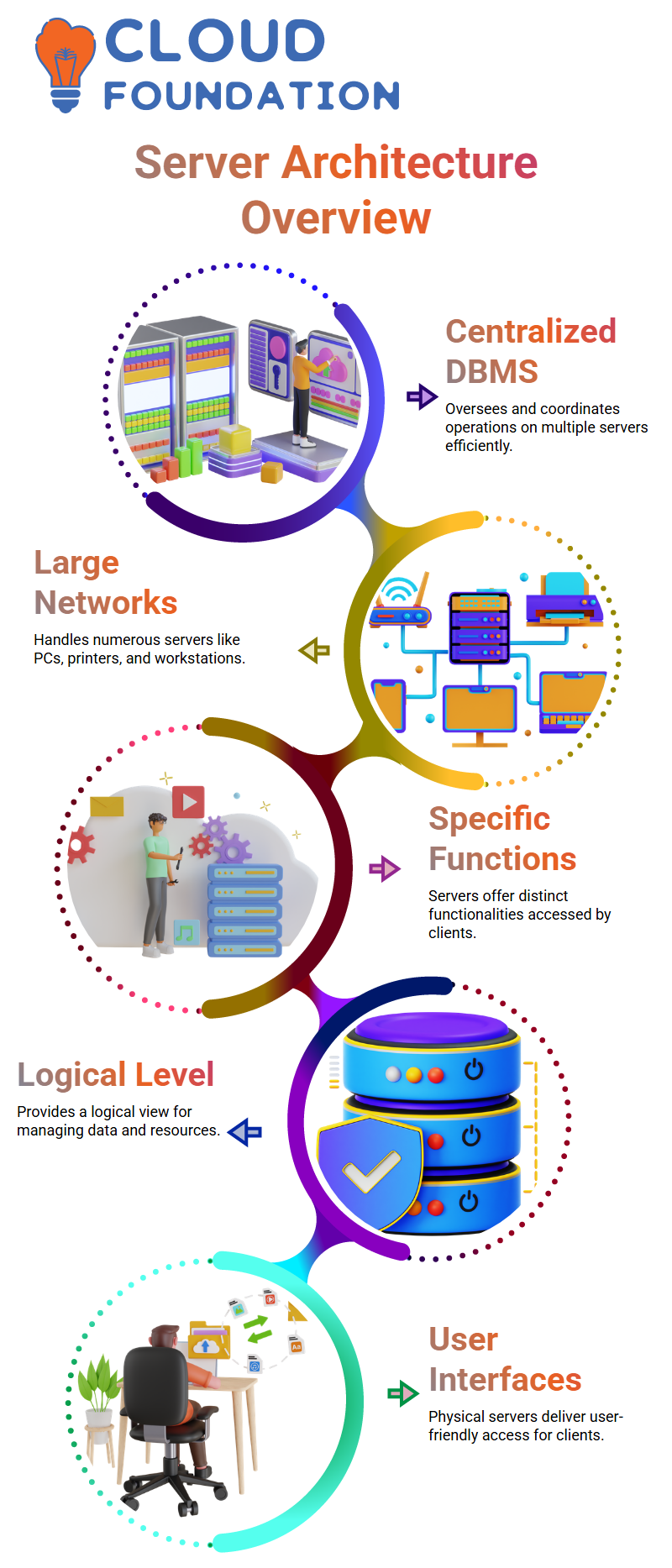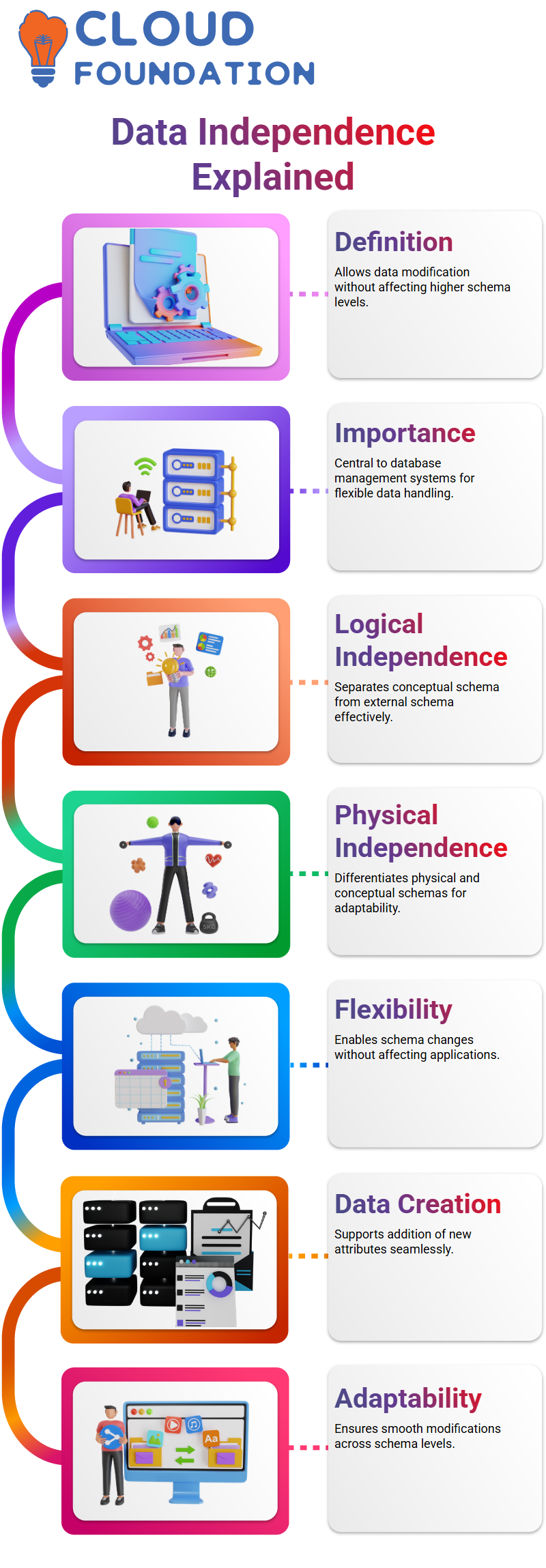DBMS Tutorial
Introduction to DBMS
Database Management Systems (DBMSs) are software programs created to efficiently store, retrieve and organize information in databases.
A DBMS acts as the gateway between users and databases by making information readily accessible, organized consistently across them and protected against unwanted access.
Database Management Systems (DBMSs) offer solutions to streamline data administration chores and maintain data integrity across vast, complicated datasets by offering capabilities for processing, storage and security of information.
Database management systems form the backbone of virtually all modern software programs – from social networks and cloud services like Drop box to banking systems and e-commerce platforms, helping businesses effectively store, organize, manage, and analyse massive volumes of information.
An effective DBMS also requires communication software that permits remote users to gain access to its database.
Database designers, administrators, and other users may use computer terminals, workstations or local personal computers connected via phone lines or local area networks to the database site for data retrieval. Such tools may come in handy during data entry tasks.
Environment of a database system comprises various elements, such as modules of database management systems (DBMSs), utilities related to database systems and various tools.

Environment plays an integral part in creating database applications such as J Builder System Power that provide access from different locations.
Data Definition Language in DBMS
Data definition language provided by database management systems includes data definition and storage definition as well as view definition language and data manipulation – two essential features of modern DBMSs.
Architecture specifies a conceptual schema, internal and external schemas and any mappings between levels, while also specifying any views expressed by different user groups.
True three-schema architecture may also be utilized here as well as another terminology known as architecture for this task.
VDL (View Definition Language) provides an effective means of specifying user group views and their mapping to conceptual schema, while at the same time also mapping external levels and conceptual levels.
Data Definition Language, or DDL for short, can often suffice in managing database management systems to specify conceptual schema, internal schemas and external schemas during database design.
Users then should have access to manipulate this data within their databases.
Data manipulation language (DML) combines data definition, manipulation language and view definition language for effective data manipulation operations.
DML’s purpose is to manipulate, retrieve and update existing information as part of data manipulation operations.
It allows retrieval, manipulation, and data update modification insertion deletion. It offers solutions that meet every aspect of data manipulation needs in one convenient package.
DML allows data manipulation including definition, updating, modification, insert, delete and other operations related to it. SQL Database Language
SQL Database Language
SQL is an indispensable language used for data manipulation and viewing that comprises two subtypes.

High level or non-procedural DMLs, used to specify complex database operations concisely. Low level procedural DLMs that can be found embedded into general purpose programming languages like C++ and Java.
High level DMLs (also called sets) allow retrieving multiple records at once with just one statement; at a time DMLs also retrieve many at the same time; low level ones use looping techniques to retrieve and process each record from a set individually.
DBMS Interfaces
Database Management Systems (DBMSs) offer several interfaces that enable users to interact with databases. They are classified according to type: Record-at-a-Time Interface and Set Interface.
With Record-At-A-Time interface users are able to retrieve one record at a time from a database table or data store.
With Set Interface users can retrieve more records at one time than with Record At A Time Interface and can make searches quicker by setting multiple records at once at the same time as they retrieve from it at one go.
An interface designed to process data in bulk instead of one record at a time is known as a Set at a Time interface, such as those offered by databases like Oracle.
Menu-based interfaces, forms-based interfaces and dynamic ones may all fall within this category.
Menu-based interfaces present users with an organized selection of choices called menus; often this method of navigation takes the form of pull-down menus on web platforms.
Form-based interfaces typically display forms to each user so they can enter data as necessary.

They’re generally tailored towards various categories of users such as database, navigational navigation or parametric users.
Parametric users utilize canned transactions or standard queries while dynamic interfaces allow for greater interaction with their databases through various means.
Graphical User Interface (GUI)
Graphical user interface (GUI) refers to any form of interface which presents data in diagrammatic form for easy user consumption.
Users manipulate this diagram and specify parts of its displayed schema diagram using menus and forms with an external pointing device like a mouse to select specific parts.
Natural language interfaces accept requests in natural languages like English or other related ones.
These interfaces seek to interpret user language and attempt to comprehend them; each has their own schema and dictionary of important terms similar to conceptual schema.
Natural language interfaces draw upon these modules when interpreting requests, producing high-level queries if their interpretation was successful.
Concept of Cardinality
Cardinality is an essential aspect of understanding relationships among entities.
This refers to the maximum number of relationships an entity can establish – one-on-one or many-on-many relationships can exist simultaneously.
Cardinality relationships exist between two entities such as employees and departments. One-to-one management relationships occur where only one employee manages at any one time or any at all.
Employee relationships between departments and employees can also be expressed using cardinality ratio, where one employee works in as many departments as possible.

Furthermore, one department could potentially house multiple employees.
Concept of Participation
Participation restrictions arise when an entity depends upon another for its existence and survival.
Two types of participation constraints are explored herein, total participation and partial participation. Total participation can be represented with two lines while partial participation by only a single line.
Employee and department/relationship managers represent two entities that should come together.
All department entities participate in this relationship type, meaning each one should have its own manager.
This creates total participation, represented by a double line. However, not all employees in an entity set will serve as managers in such relationships – such as when E1, E3 and E4 manage one entity set respectively.
For an employee entity set, not all of its members will serve in this capacity either.
Participation by this entity in this relationship type is depicted by one continuous line, representing their participation within it.
This means that this entity’s participation in this relationship type equals that of all department entities set within this type.
Error Diagram
The entity symbol represents any tangible object with existing existence that exists as represented by a rectangle, often called strong entities.
A weak entity is another entity type represented by double rectangles that connect at both corners, along with an oval for identification purposes.
A key attribute helps distinguish this particular type by outlining its name and outlining any relevant properties of that specific entity.
Multi-valued attribute symbols represent sets of values related to an entity and can be represented with double ovals; composite double ovals allow users to further segment attributes as they wish.
A key attribute enables uniquely identifying an entity by underlining its name and emphasizing its properties, while multi-valued attributes can be represented with double ovals with underlines to indicate each attribute name.
A composite double oval can be distinguished from its counterpart by having an underline under the name of its attribute, signifying it can be broken up further into separate attributes.
Various components of DBMS & their functions
Database management systems offer various components and functions to efficiently organize data. Some key utilities in these systems are loading, backups and incremental backups – these services help protect database integrity while helping avoid system malfunction.
By employing these utilities, administrators can efficiently manage a database and ensure its proper functionality.

Transferring data between disk storage and main memory for processing by other DBMS modules, applications programs or database management systems.
Once data has been stored in main memory it can then be processed further using other database management systems modules and application programs.
The first utility, loading, involves uploading existing data files into the database. This process automatically reformats it based on source and target formats respectively.
Data file formats or structures must also be specified, and then automatically reformatted by an utility and stored into a database.
A backup utility also exists that creates an archive copy of your database which can then be restored should any system failures arise.
Incremental backups can also be utilized, however only changes since the previous backup are stored on disk. Although more complex, incremental backups save space as each previous version remains archived on disc.
Utility types & their functions in a database system
File Reorganization Utility allows database files to be restructured into different file structures for improved performance, by changing their file organization and file structures.
Monitoring utility monitors database use and provides full statistics for analysis by database administrator, helping him/her decide if/how files need reorganization to boost performance or not.
There are also utilities designed specifically to sort files, monitor user access and perform various other functions.
Other tools used by database designers, administrators and users for database design include case tools, computer-aided software engineering tools, data dictionary or data and repository system tools.
A database designer, administrator or user may utilize such tools when building their databases.
Data dictionary or data storage provides another useful resource, storing catalogue data as well as user and application program descriptions and details.
This system can also be considered an information repository as its content can be quickly and conveniently accessed by database administrators or individual users when needed.
Server Architecture
Server architecture is an essential feature of database management systems (DBMS) which facilitates interaction among various types of servers and clients, to efficiently manage data, resources and applications.
Server architecture relies upon a centralized database management system (DBMS), which oversees and coordinates operations on multiple servers.

This system was designed to handle large numbers of servers connected over networks – personal computers, printers, workstations and file servers among them – in an effective and manageable way.
This architecture’s objective is to establish servers with specific functionalities and resources which can be accessed by client machines via various interfaces provided to users for interaction between servers and clients.
At its logical level, server architecture refers to any system which provides a logical view of data and resources; at this level the database resides and managed; while physical servers offer user-friendly interfaces for client machines.
What is Client Server
Client computers provide users with user interfaces and services required by them, along with local processing capabilities and any necessary capabilities needed for local use.
Clients connect to servers that offer functionality specific to user needs.
Two main client server architectures include two tire and three tire client server designs. Initial two tire designs were typically central systems; later however they have become widely utilized within commercial databases.
User interfaces and application programs migrated towards client side while query and transaction functionality remained on server side, leading to the evolution of query or transaction servers.
RDBMS query and transaction servers perform these two essential tasks for users of RDBMS; commonly referred to as SQL servers due to being written around SQL language standards, when access is necessary from DPMs this server establishes a connection between client and database through application programs that connect.
Three-tiered client server architectures each possess specific features and requirements that distinguish it.
The three-tier architecture is an arrangement that features two forms of database management systems (DBMSs) and server architectures, respectively.
Open Database Connectivity (ODBC), offers programs an application programming interface to access databases on both client and server sides; using its application programming interface allows query and transaction requests to be sent between these locations simultaneously for processing by both.
Server architectures (ODBC) are another popular style used in web applications that feature distributed software components across two systems for greater efficiency and scalability.
Finally, client architectures (CSA) are another style used by web applications as part of its framework.
Three-tier architecture allows for the development of multiple client and server applications that communicate directly with databases on both ends, thus improving performance while efficiently allocating resources and managing data efficiently.
Data Independence in DBMS
Data Independence in DBMS Data independence is an integral aspect of database management systems that facilitates data creation and modification at different levels without negatively affecting higher ones, with schema changes made at any one level not having any ramifications for other levels above it.
Data independence is a central concept in database management systems, as it permits for data creation and modification without altering existing schemas or external models.

Data independence enables the creation of new data items, attributes or elements without needing to modify external schema or application programs.
Logical data serves as one type of independence between conceptual schema and external schema.
This allows for the easy creation of new data items or attributes without changing external schema or application programs, and provides much greater flexibility for creating data without altering external schema or application programs.
Physical data independence works between physical and conceptual schemas to allow for new data items or attributes without altering external schema or application programs.
Conclusion
Database Management Systems (DBMSs) have become essential tools in contemporary data management due to providing an organized, safe, and efficient method for storing, retrieving, and organizing information.
Not only does the program feature querying, updating and data manipulation features but it also ensures data consistency, integrity and accessibility.
Database management systems (DBMSs) have become indispensable across industries such as banking, healthcare and ecommerce due to the sheer volume and concurrency of data they manage.
Database Management Systems (DBMSs) will continue to lead in data management as technology progresses, adapting to emerging problems while expanding their capacities to accommodate ever increasing data needs.

Koppadi Madhavi
Author



